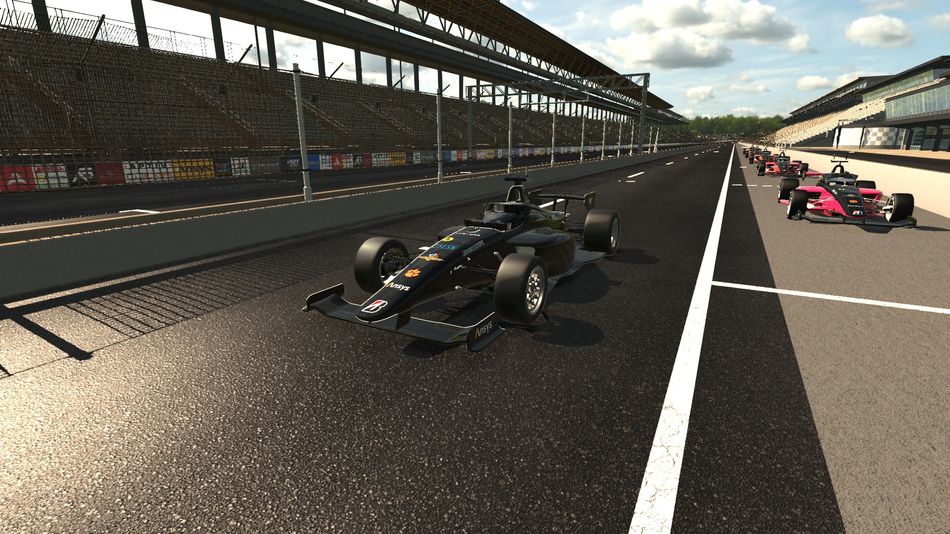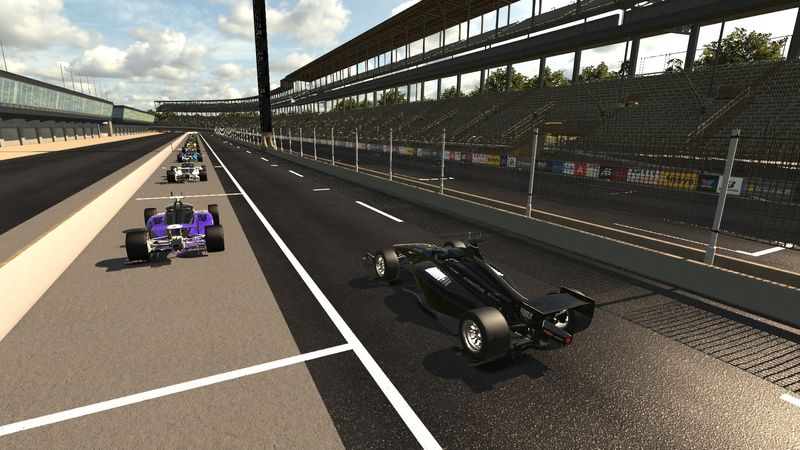The Indy Autonomous Challenge Simulation Race
Before autonomous race cars take to the track, university teams must qualify in a simulation race around the Indianapolis Motor Speedway, where the winner will be awarded a $100,000 USD prize.
Together with Ansys, a developer of simulation software, we are creating a series of content about the technologies that make sustainable transportation possible. Part of this series follows The Indy Autonomous Challenge which is seeking to overcome prominent barriers to automated vehicle (AV) commercialization through an intensive learning cycle where the next generation of automotive engineers test the boundaries of current assumptions. The Challenge will culminate in a final race held in October of 2021, where teams will compete by autonomously racing a modified Dallara-built Indy Lights race car around the Indianapolis Motor Speedway (IMS) using the software they have each developed. Read more about the background to the Challenge in our foundation article here.
The next stage in the Indy Autonomous Challenge (IAC) is the simulation race taking place on June 30, 2021 where the university teams will compete for a $100,000 USD prize for first place and a $50,000 USD prize for second place. Watch the race live here:
Beyond the cash prize, teams are motivated to perform well in order to demonstrate code readiness and safe vehicle operation. The simulation race is a crucial step towards proving that the autonomous vehicle controller can safely race a car at speeds of over 120 mph. Engineers must successfully compete in the simulated race before teams head to the track to test the modified Dallara Indy Lights race car ahead of the final high-speed autonomous race at the Indianapolis Motor Speedway (IMS) on October 23, 2021.
Sim Race Prep: Software and Hardware Development Tools
Engineering teams have had access to the Ansys VRXPERIENCE Driving Simulator to develop and test their autonomous vehicle code. Each team was also given the freedom to choose their preferred programming language. The Ansys framework is code agnostic, which greatly shortens the time from concept to simulation. University teams didn’t need to waste any time getting up to speed with a specific type of code before diving into their project.
During the development hackathons and as the teams prepared for the simulation race on their own, they had access to the Microsoft Azure framework. They were given an unlimited number of compute credits to allow them to scale their simulations to complete as many virtual miles as possible before the on-track event. Each individual compute instance was determined based on the compute power available on the vehicle itself, allowing teams to realistically optimize performance.
Sensor Inputs on the Dallara Race Car
Competitors were kept apprised of the modifications on the Dallara Indy Lights car via virtual design reviews. The sensor suite added to the race car allows for all-around visibility, multiple times. In terms of the sensors added to the car, teams have the following inputs from 360° around the Dallara:
- 6 cameras
- 4 radars
- 3 lidars
- 1 GPS IMU
The Main Development Objectives for the Sim Race
Based on the inputs available, the focus for the simulation race is to develop an autonomous vehicle code that is adept at path planning (or motion planning) and motion execution. Path planning is determining the appropriate number and location of steps to move an object from its starting location to the destination. Motion execution is then taking the required path and converting it into the speed and direction required. In this case, the throttle input and steering angle would need to be specified.
Additional real-world modeling is included within the simulation race. Tire degradation is modeled by decreasing the coefficient of friction as the race progresses. Vehicle drafting is also simulated, such that when the race car is within a few car lengths of the vehicle in front, the drag on the car is reduced, and teams can leverage the opportunity to overtake their competitors. The teams’ code will have to successfully navigate changing simulated race conditions in order to win. While the cash prize would be a huge honor and boost to the winning team, the data and experience generated by the race is also invaluable. Teams will be looking to understand the strengths and weaknesses of their code as well as get a good look at the competition. The brilliance of the simulation software is that it allows for post-race deep dives that will reveal where the teams need to improve, adjust and tweak before the next stage of the challenge.
Simulation Race Day Logistics and Competitors
University teams from around the world are participating in the Indy Autonomous Challenge. Each team has a different number of members, with different academic backgrounds. For instance, some teams are a core group of eight undergraduate students within engineering and computer science, like at the University of Waterloo, while other teams have more than 27 team members, who are primarily Ph.D. candidates and MSc students, like at Politecnico di Milano. Teams are continually assessed for race worthiness and must meet expectations and deadlines to be able to continue to participate.
On June 30th, the competing teams will gather for preliminary rounds of competition leading up to the final simulation race. Each team’s vehicle controller will be plugged into the Ansys VRXPERIENCE Driving Simulator platform to first demonstrate single-lap performance. Time Trials occur first, where one car at a time will be raced and the lap times will be recorded to set the starting grid for two heat races.
Odd-numbered finishers (the fastest single lap, the third fastest, and so on) will take part in the first heat race, and even-numbered finishers will be part of a second heat race. These heat races will be 10 laps long, and the top finishers from each heat race will make it into the final simulation race. The final will also be a 10-lap race, and the fastest finisher will be the winner, provided no rule breaches.

Awarding the Winner of the Simulation Race Live
A three-person panel of race stewards ensures that all participants are abiding by the rules. If a car is deemed to be impeding another or has caused a collision, the stewards will black flag the car, disqualifying them from the winner’s circle. They will also keep a close eye on whether all competitors stay within track limits.
The ultimate goal of the simulation race is to demonstrate safety. The tiered approach to race day will see the complexities increase as the number of cars on the track increases. And the winning team will come away from the day with more than a cash prize; they’ll have validated all their development efforts and approximately a year’s worth of engineering effort. Successfully managing the simulation race puts teams in good stead to move towards the finale in October.
Watch the race live with Ansys and Wevolver
You can watch the live stream on June 30th to see the teams battle it out on the virtual race track by getting updates about the links here. In addition to the excitement of live racing, inquisitive technical minds will enjoy the high-speed performance test of the teams’ autonomous controllers. Commentary into the team's success and engineering choices will be provided by simulation and automotive experts.
Read more about the Indy Autonomous Challenge in our foundational article here.
This article was written by former motorsport engineer Kattie Thorndyke with editing by the Wevolver Team and Ansys Global Industry Director, Tarun Tejpal.
About the sponsor: Ansys
Ansys provides engineering simulation software used to predict how product designs will behave in real-world environments. Founded in 1970, Ansys employs more than 4,400 professionals, many of whom are expert M.S. and Ph.D.-level engineers in finite element analysis, computational fluid dynamics, electronics, semiconductors, embedded software, and design optimization.


